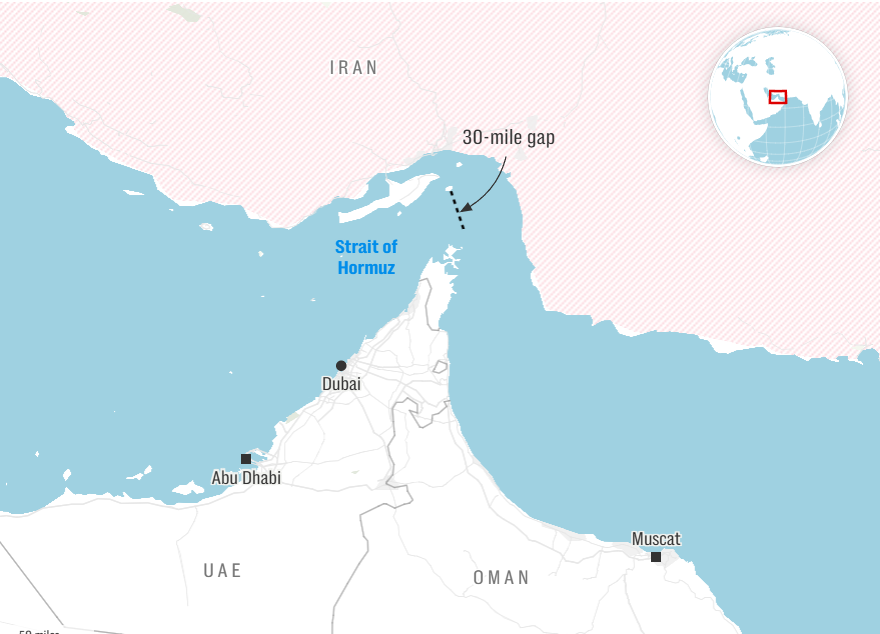The Strategic Importance of the Strait of Hormuz
Strait of Hormuz closure: The Strait of Hormuz, one of the world’s most critical maritime chokepoints, is under threat of closure following recent US airstrikes on Iran’s nuclear facilities. This narrow waterway, located between Iran and Oman, serves as the primary transit route for approximately 20% of the world’s oil and gas supply. Any disruption here could send shockwaves through global energy markets, leading to skyrocketing oil prices and geopolitical instability.
In this in-depth analysis, we explore:
- Why the Strait of Hormuz is so vital to global energy security
- Iran’s potential motives and capabilities to block the strait
- The impact on major economies, including India, China, and the US
- Alternative oil supply routes and their feasibility
Why the Strait of Hormuz Matters
A Global Energy Lifeline
Strait of Hormuz closure: The Strait of Hormuz connects the Persian Gulf with the Arabian Sea and the Indian Ocean, making it indispensable for oil exports from key producers:
- Saudi Arabia
- Iraq
- United Arab Emirates (UAE)
- Qatar
- Kuwait
- Iran itself
At its narrowest point, the strait is just 33 km (21 miles) wide, with shipping lanes only 3 km (2 miles) wide in each direction. This makes it highly vulnerable to blockades, military conflicts, or political decisions—such as Iran’s latest threat.
Historical Precedents
Iran has previously threatened to close the strait in response to Western sanctions and military pressures. In 2019, tensions spiked when Iran seized a British tanker in retaliation for the UK detaining an Iranian oil vessel. The US has historically deployed its Fifth Fleet in Bahrain to ensure the strait remains open.
Iran’s Parliament Approves Closure: What Happens Next?
Political and Military Considerations
Following the US airstrikes on Iranian nuclear sites, Iran’s parliament reportedly approved a measure to close the strait. However, the final decision rests with the Supreme National Security Council, Iran’s top security body.
- Esmail Kosari, a senior Iranian lawmaker and Islamic Revolutionary Guard Corps (IRGC) commander, stated:
“For now, [parliament has] come to the conclusion we should close the Strait of Hormuz, but the final decision is the responsibility of the Supreme National Security Council.”
- Foreign Minister Abbas Araghchi remained ambiguous, saying:
“A variety of options are available to Iran.”
How Could Iran Block the Strait?
Iran possesses several military and strategic tools to disrupt shipping:
- Naval Mines – Quick deployment could halt tanker traffic.
- Anti-Ship Missiles – Iran’s coastal defense systems could target vessels.
- Swarm Attacks by Fast Boats – The IRGC Navy has used small boats to harass US warships.
- Cyberattacks on Shipping Systems – Disrupting GPS and navigation systems.
However, a full-scale blockade would likely provoke a US-led military response, including airstrikes on Iranian naval assets and potential escorted convoys for oil tankers.
Global Economic Impact: Who Would Suffer the Most?
Oil Price Surge and Market Chaos
Analysts predict that a Strait of Hormuz closure could send oil prices soaring past $80 per barrel, with potential spikes beyond $100 if prolonged.
Major Economies at Risk
| Country | Dependence on Hormuz Oil | Potential Impact |
|---|---|---|
| China | High – Largest importer of Gulf oil | Severe energy crunch, economic slowdown |
| India | Moderate – 2M bpd via Hormuz | Alternative sources (Russia, US, Brazil) may help |
| Japan & South Korea | Very High – Heavy Gulf reliance | Immediate fuel shortages |
| Europe | Moderate – Diversified sources | Price inflation, but not a supply crisis |
| USA | Low – Energy independent | Minimal direct impact, but global market instability |
India’s Strategic Position
India imports 5.5 million barrels per day (bpd) of crude oil, with 2 million bpd passing through Hormuz. However, due to diversified sources, India is relatively insulated:
- Russian oil (via Suez or Pacific routes)
- US shale oil and LNG
- Brazilian and African supplies
Additionally, Qatar’s LNG exports to India bypass Hormuz, further reducing vulnerability.
Alternative Routes: Can the World Bypass Hormuz?
While no single route can fully replace Hormuz, some alternatives exist:
1. Saudi Arabia’s East-West Pipeline
- Capacity: 5 million bpd
- Runs from Abqaiq to Yanbu, bypassing Hormuz
2. UAE’s Fujairah Pipeline
- Capacity: 1.5 million bpd
- Links Habshan fields to Fujairah port
3. Russian Oil Via Arctic and Pacific
- Increasing shipments to China and India
- ESPO Pipeline supplies Asian markets
However, these alternatives cannot compensate for a sudden Hormuz shutdown, meaning short-term price shocks are inevitable.
Conclusion: Will Iran Go Through With It?
Iran’s threat to close the Strait of Hormuz is a high-risk geopolitical gambit. While it could inflict short-term pain on global oil markets, it would also invite severe retaliation from the US and allies.
Key Takeaways:
✅ Strait of Hormuz is the world’s most critical oil chokepoint
✅ Iran’s closure threat is serious but not yet finalized
✅ Oil prices could surge past $80/barrel if blocked
✅ India has backup sources; China would be hardest hit
✅ Military conflict risks remain high
For now, the world watches as Iran’s Supreme National Security Council weighs its next move. One thing is certain: any disruption in Hormuz will send shockwaves through the global economy.




